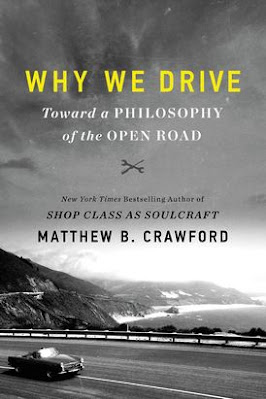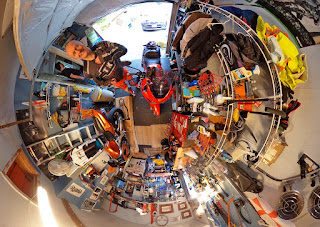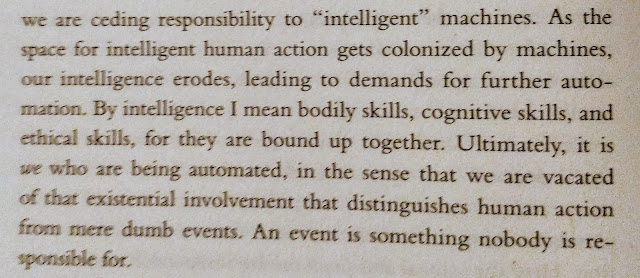I misspent an awful lot of my youth Dungeon Mastering. We often spent whole days, ten-twelve hour stretches in a row, playing Dungeons and Dragons in various basements. During the summer it wasn’t uncommon for us to do whole weeks of days (or nights) like that.
If you’ve never played the game before, it’s basically a combination of story telling, creative writing, map making, art and random dice rolls. You create a character with a set of statistics and you go out and adventure with them. As you gain experience, you get to improve your statistics and get better chances to survive battles and face greater challenges. The characters develop based on their experiences (and their luck). Over time people get mighty attached to them. The players control themselves, the DM is the story teller, the one who controls the world in which they find themselves. When it’s done well, it feels a lot like you’re all creating a fantastic narrative together, and none of you knows how it’s going to end.
I ended up falling into the role of the DM because I could story tell well, and I learned to roll with the dice, I didn’t try to force the story when a lucky dice roll would change my expectations. Early on I’d over-script adventures and then have trouble when the dice allowed characters to do things I didn’t expect (or shouldn’t have had a statistical chance of happening). It took a bit of practice (and developing confidence) to trust that the story would unfold before us.
In one case I planned to kill off all the characters in the first five minutes, and then have them adventure in the after-life trying to get their lives back. As I mentioned, people get mighty attached to their characters. Dying freaked them out, they fought and fought. Finally, a tiny little hobbit-thief was the last one standing, facing the Grim Reaper himself. I had to give him a chance, otherwise the dice (and game) are pointless, so I said he had to roll a natural 20 (a 20 on a 20 sided dice) to successfully attack death. He actually did it. Right then I had to throw away my plan and go in a new direction. It wasn’t as nuanced as what I had prepared, but it mattered more to the players because they were authoring it, rather than having it read to them. Giving players no authorship in the game made it empty, pointless. That game became infamous, as did the Halfling who foot swept Death.
After a while, DMing all came down to world building (those are two of dozens) for me. I didn’t worry so much about what they would be facing on a situation by situation basis, as long as I knew where we were and when we were. The more richly we’d develop the world, its politics, religion, history, geography, the easier it was to create a rich, interactive experience around my players (this was a very collaborative thing, players would bring maps, histories, heraldry, costumes and all sorts of other surprises to games).
Our first road trip at 17 years old was an adventure in a rickety Chevette from Toronto to Milwaukee for GenCon, the gaming fair put on by the makers of Dungeons and Dragons. In the ’80s, this place was the Mecca for gaming. Tens of thousands of attendees in the largest conference centre in town. We attended lectures on ethics in gaming, integrating history and geology into world creation, and we played tournaments with thousands of others. We met the artists and authors that we loved; a professional conference for geeky seventeen year olds!
We took that richness and turned it over into our game play. Our stories evolved from dungeon crawls for loot, to archetypal quests to modern day parables about the evils people do. At its leading edge one of our games could speak to our own alienation and sense of desperation, while simultaneously giving us a means to exorcise it.
All of this made me aware of how a game works on a fundamental level. If you apply certainty and destroy choice (and chance), you kill it stone dead. If you place one participant in a position of absolute power so that they become a teller, rather than a participant, you’ve killed it again. You play a game best when you play it within its own context. Any game that breaks the forth wall falls to pieces. Game coherency requires consistency, not to a person’s will, but to the circumstances of the game. The best games are flexible enough to become richer as players add their own content (experiences, objects, ideas) to the game.
I’ve seen players cry when their character dies, but not only in sadness, also with respect. A good death is a good story, it honours the player’s efforts, the character’s beliefs and the game itself. The nice thing about a game is that sometimes Valkyries can then bring that dead hero to Valhalla, and you never know what can happen from there… good games give you a chance to maximize people’s involvement in them using the full spectrum of human emotion and intellect.
This has been percolating since I met another former DnDer (@liamodonnell) at OTF21C a few weeks ago and said, “everything I know about teaching, I learned from DMing.” It’s the truth.
I wanted to turn this into a rant on gamification in education, but in looking back on this, I realize that these ideas are very important to me. I’ve always had a great deal of trouble believing, but my years spent as an acolyte of gaming have made me just that, a believer.
I’m going to leave the other bits below, but feel free to stop reading here. I’m happy with clarifying a good idea rather than attacking a bad one.
Notes that didn’t make the cut:
Games aren’t ephemeral, if you want them to work, you have to nurture coherency within the game context
Not knowing what was going to happen also, ultimately, made it easier for me as a game master. I got to share in the story instead of telling it. I wasn’t a transmitter, I was part of a cast, bringing a story to life.
Any of this sound familiar from a teaching perspective?
If you deliver your teaching with cardboard certainty and inflexible perfection, your students have no authorship in that experience, it means nothing to them. If you teach as a participant, the interaction has life, and everyone involved is authoring it. It might not be as efficient or technically perfect as you’d like, but then I think perfection is entirely overrated.
The real danger is when those cardboard teachers try to use games as if they were a sugar coating you can apply to make something edible. Gamification tries to use game play as a way of getting people to do things, but that is a disaster.
Gold stars aren’t a new idea, but they sound like one if you throw fancy terms like gamification on them.
A good game needs to work within its own limits, but those limits should be deeply embedded within the game dynamics, and they should be designed to be adjustable, games should evolve meaningfully as their players do.





























